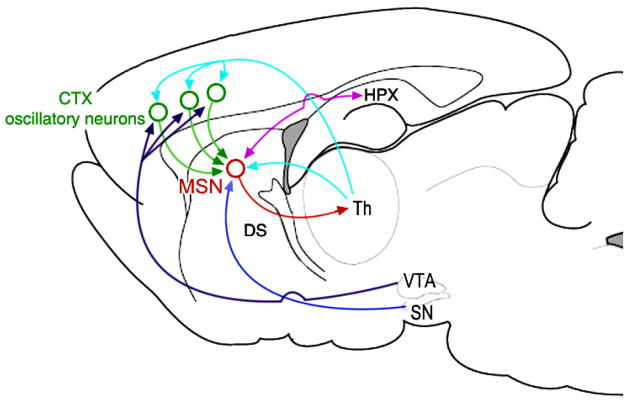Figure 2.
Diagram of the possible mappings of functional hippocampal connectivity within the cortico-thalamic-basal ganglia circuit of the rat proposed by the striatal beat-frequency (SBF) model of interval timing (Matell & Meck, 2004). In this model, oscillatory neurons in the cortex (CTX) project to medium spiny neurons (MSNs) in the dorsal striatum (DS) which receives dopaminergic input from the substantia nigra pars compacta (SNc). Dopamine projections from the ventral tegmental area (VTA) to the CTX are able to modulate the frequency of CTX oscillations. Bi-directional projections from the hippocampus (HPX) to the DS modulate the firing thresholds of MSNs via either tonic inhibition or phasic excitation. Lesions of the hippocampus would be expected to release the DS from this inhibition, thereby reducing the firing thresholds for MSNs and producing proportional leftward shifts of timing functions (underestimation of duration). The timing circuit is completed by having the CPu project to the thalamus (Th) and back onto the CTX in order to provide feedback control of temporal processing (Lustig & Meck, 2005; Meck, 1988). Adapted from Yin and Troger (2011).

